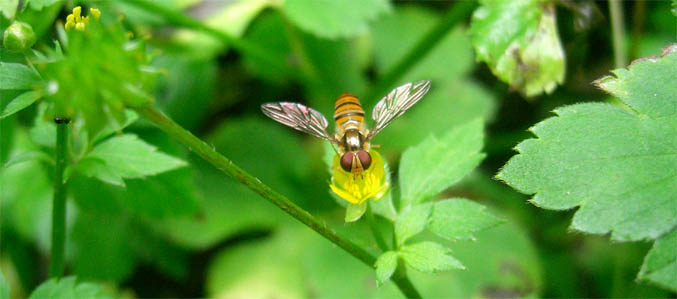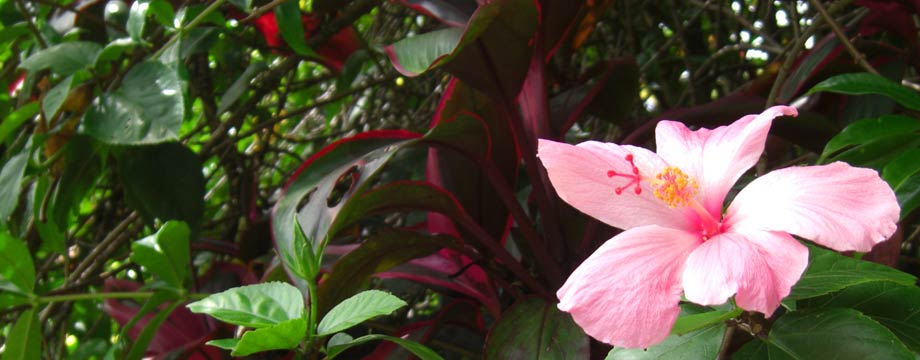One of my favorite ways to spend a spring or summer night in Japan is to go out and watch the hotaru (fireflies) flicker on and off in unison. The Hotaru Festival in Kyokushi (North of Ozu in Kumamoto-ken) is worth checking out, and easy to get to. During this celebration, beef ranchers like the Otsuka family sell exceptionally delicious beef which is best enjoyed with a glass of beer and a bunch of friends.

This isn’t a hotaru, it’s a picture of a tiny bee that I took at Yamabuki suigen (Yamabuki spring). In daylight, the fireflies look like regular elongated black beetles, somewhat reminiscent of a cockroach. I took the next picture in the dark of a firefly in my hand from Kyokushi last year:
Such a sad picture… The bioluminescence and frequency of their flashing varies among species. The fireflies in Kyokushi blink slower and with a yellowish light, while the yamahotaru blink slightly faster in a bluish-white. I wonder if the color differences have to do with the membrane of the photophores (assuming this is what the light producing cells on fireflies are called) or due to slight chemical differences in combination with the luciferin and luciferase…
Anyhow, if you are in Aso-gun near Ubuyama-mura during mid to late June you can still catch the yamahotaru (mountain fireflies), well after the other species have mated and died. One great spot is south of Namino village, in a place called Shiramizu Taki (white water waterfall- pictured below). The waterfall itself is worth a visit during the day time, but it is truly magnificent at night illuminated by the stars and the fireflies. The lighting has a soft, magical quality because of the diffusing effect of the spray generated by the falling water. Apparently, the light on my cellphone is irresistable to yamahotaru, as one followed it back into my pocket. I watched in amusement as it blinked out a pickup line to my unreceptive D251.
Yamahotaru are more reliable to see than the other species, I have found, because they come out in rain or good weather, and wind tends not to be a factor as they tend to live in protected areas among the trees or cliffs.
My other favorite places to see them are in Ubuyama-mura in Hokubu. I was able to see hotaru at Yamabuki suigen, but had to turn back because it was pitch-black, raining hard, and I only had my keitai (with a low battery) to serve as a flashlight. Instead, I went to Ikeyama suigen which is more popular and easier to access. The hotaru were out in abundance in the mist and drizzle, lighting up the cedars with their halogen-white glow.

|
You are using an insecure version of your web browser. Please update your browser!
Using an outdated browser makes your computer unsafe. For a safer, faster, more enjoyable user experience, please update your browser today or try a newer browser.
|

One Response to My Favorite Places To View Hotaru